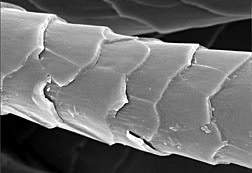The earliest found felt is from 1800BC in burial sites on the Tarim Basin in NW China.
I would like to share with you an article from Victor H Mair
http://penn.museum/documents/publications/expedition/PDFs/52-3/mair.pdfA snippet from the article:
 'Among the most spectacular of the mummies from Small
River Cemetery 5 (hereafter Xiaohe) is a female that has come
to be called “The Beauty of Xiaohe” (ca.1800–1500 BCE) (see
page 23 and above). She is more than a match for “The Beauty
of Loulan,” a mummy dated to ca. 2000 BCE that was found
at Gumugou in 1980. The Beauty of Xiaohe is very well pre-
served and even retains flaxen hair and long eyelashes. She
was wrapped in a white wool cloak with tassels and wore a felt
hat, string skirt, and fur-lined leather boots. She was buried
with wooden pins and three small pouches of ephedra. The
Beauty of Loulan wears garments of wool and fur and a felt
hood with a feather; she was buried with a comb, a basket,
and a winnowing tray.'
'Among the most spectacular of the mummies from Small
River Cemetery 5 (hereafter Xiaohe) is a female that has come
to be called “The Beauty of Xiaohe” (ca.1800–1500 BCE) (see
page 23 and above). She is more than a match for “The Beauty
of Loulan,” a mummy dated to ca. 2000 BCE that was found
at Gumugou in 1980. The Beauty of Xiaohe is very well pre-
served and even retains flaxen hair and long eyelashes. She
was wrapped in a white wool cloak with tassels and wore a felt
hat, string skirt, and fur-lined leather boots. She was buried
with wooden pins and three small pouches of ephedra. The
Beauty of Loulan wears garments of wool and fur and a felt
hood with a feather; she was buried with a comb, a basket,
and a winnowing tray.'Also at this site this infant was found wearing a blue felted cap.
The earliest evidence of ornate felt is from archaeological evidence from Turkey 6500 to 3000BC, where traditional felt applique designs have been found painted on walls. Wool being biodegradable means that it is hard to find unless it has been preserved

However, where the conditions for preserving the wool have been correct as they were in Pazyryk, Southern Siberia, where the burial chambers of a chieftain were frozen due to the climate, a beautiful felt wall hanging of horse riders and saddle ornamentation of felt swans, have been uncovered. These are dated as 500BC and now reside at the Hermitage, St Petersburg.

Feltmaking has gradually spread throughout the world and has been developed for functional use for accessories such as hats and in industry, particular in car manufacture. Feltmaking for ornate artistic purposes is still practiced in the rug making of Eastern Europe into Asia where it is believed to have its origins and is a growing industry in the homes of arts and crafts people world wide.



